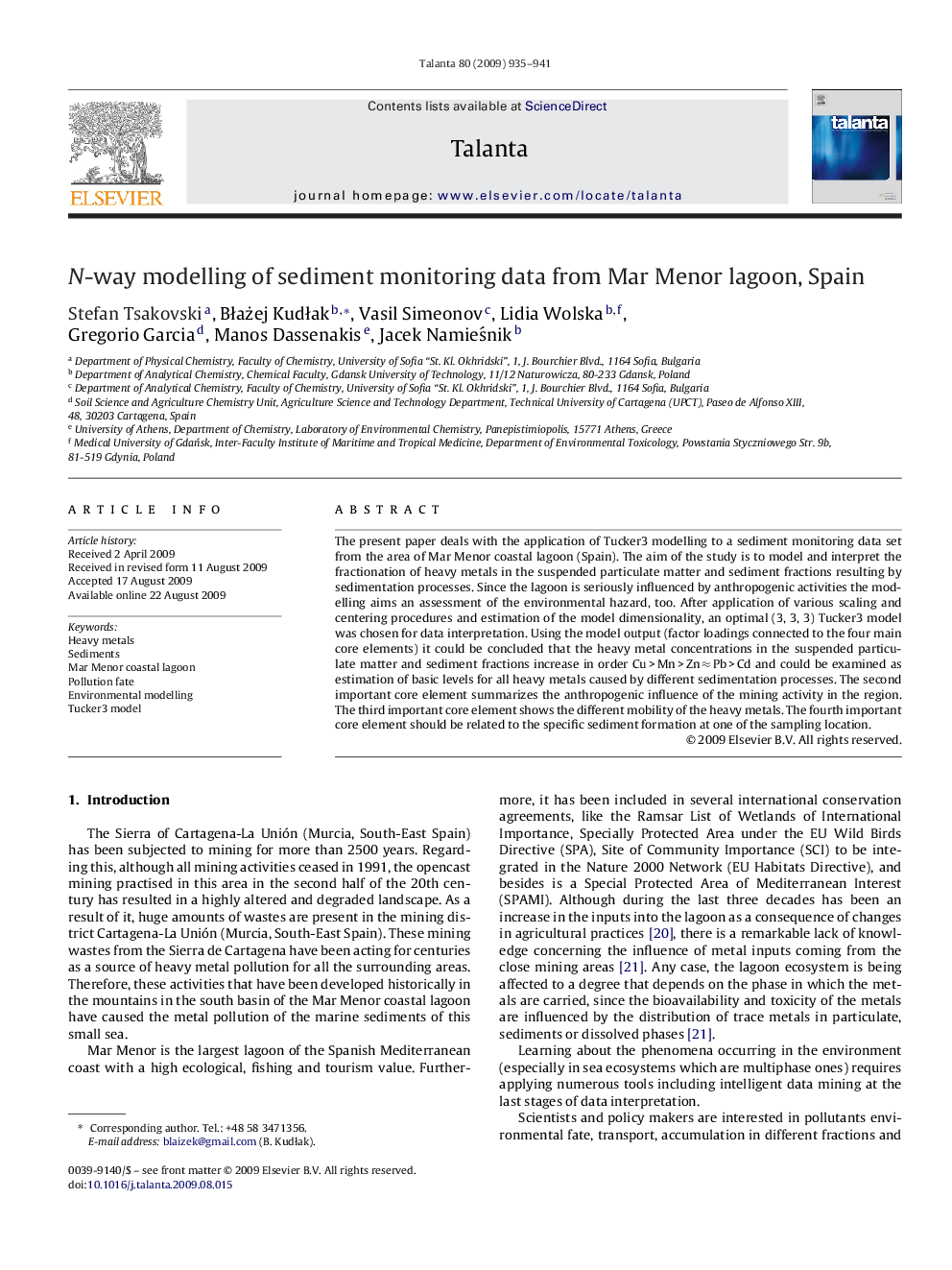| Article ID | Journal | Published Year | Pages | File Type |
|---|---|---|---|---|
| 1246784 | Talanta | 2009 | 7 Pages |
The present paper deals with the application of Tucker3 modelling to a sediment monitoring data set from the area of Mar Menor coastal lagoon (Spain). The aim of the study is to model and interpret the fractionation of heavy metals in the suspended particulate matter and sediment fractions resulting by sedimentation processes. Since the lagoon is seriously influenced by anthropogenic activities the modelling aims an assessment of the environmental hazard, too. After application of various scaling and centering procedures and estimation of the model dimensionality, an optimal (3, 3, 3) Tucker3 model was chosen for data interpretation. Using the model output (factor loadings connected to the four main core elements) it could be concluded that the heavy metal concentrations in the suspended particulate matter and sediment fractions increase in order Cu > Mn > Zn ≈ Pb > Cd and could be examined as estimation of basic levels for all heavy metals caused by different sedimentation processes. The second important core element summarizes the anthropogenic influence of the mining activity in the region. The third important core element shows the different mobility of the heavy metals. The fourth important core element should be related to the specific sediment formation at one of the sampling location.
